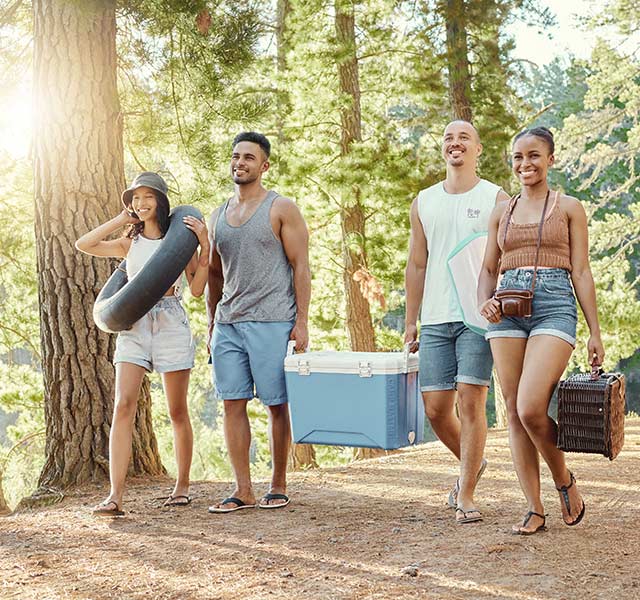It’s cooler-packing season and time to know whether your cooler is food-safety ready for the picnics, beach days, barbecues and camp-outs to come.

Eating outdoors is one of summer’s most charming rituals, but with the traveling feasts come the annual, seasonal increase in food-borne illness. One in six Americans get sick from food poisoning each year – an underreported illness, according to the Centers for Disease Control, and about 128,000 are hospitalized.
One way to avoid getting sick? Proper cooler packing.
The usual approach to packing the cooler probably goes something like this: Toss in ice, add food and drinks, close the lid. However, it’s a good idea to put more thought into the process.
Not to take the fun out of summer by complicating things – or by talking about intestinal distress, a hallmark of food-borne illness – it’s just that a little cooler-packing savvy can go a long way. It helps you control food-borne bacteria and its fun-sucking side effects.
The danger zone for bacterial growth on food is between 40 and 140 degrees. With that in mind, consider this cool cooler-packing step-by-step:
- Avoid filling a hot cooler. If cooler is stored in garage or attic, bring it down to room temperature or cooler. A sacrificial bag of ice will speed up the process.
- Lay a layer of ice in bottom of cooler.
- Add meats – the proteins that grow bacteria most quickly as temperatures rise. If cooking meat the next day or after, put it in the cooler frozen.
- Lay down another layer of ice.
- Drop in more food – dairy, cheese, dips and other proteins that need to be cold but not as cold as meats.
- In goes another layer of ice.
- Finish with foods that aren’t as heat-sensitive – fruits and veggies.
- Lay down a final layer of ice.
- Finish with drinks on top. Better yet, consider a separate cooler for drinks. That way the lid stays closed and keeps the cold in.
- Make sure the cooler is filled. A cooler with empty space heats up quicker.
- Throw in a thermometer so you know the temperature. If it climbs above 40 degrees for more than 2 hours, the perishable foods, such as meat, eggs, dairy (or anything containing those products) and cooked leftovers will need to be tossed.
More Simple Food Safety Tips
Foods to be eaten sooner than later need to be easily reachable inside the cooler. Digging around for foods lets cold escape while the lid is open.
Keep food safety in mind during cooking, serving and storing. Use a meat thermometer and separate plates and utensils or raw and cooked meats. Throw away food that’s been at room temperature or above for more than two hours.
And cheers to a happy, healthy summer!
Bethany Thayer, MS, RDN, is the director of the Henry Ford Center for Health Promotion and Disease Prevention. Learn more about Bethany.



